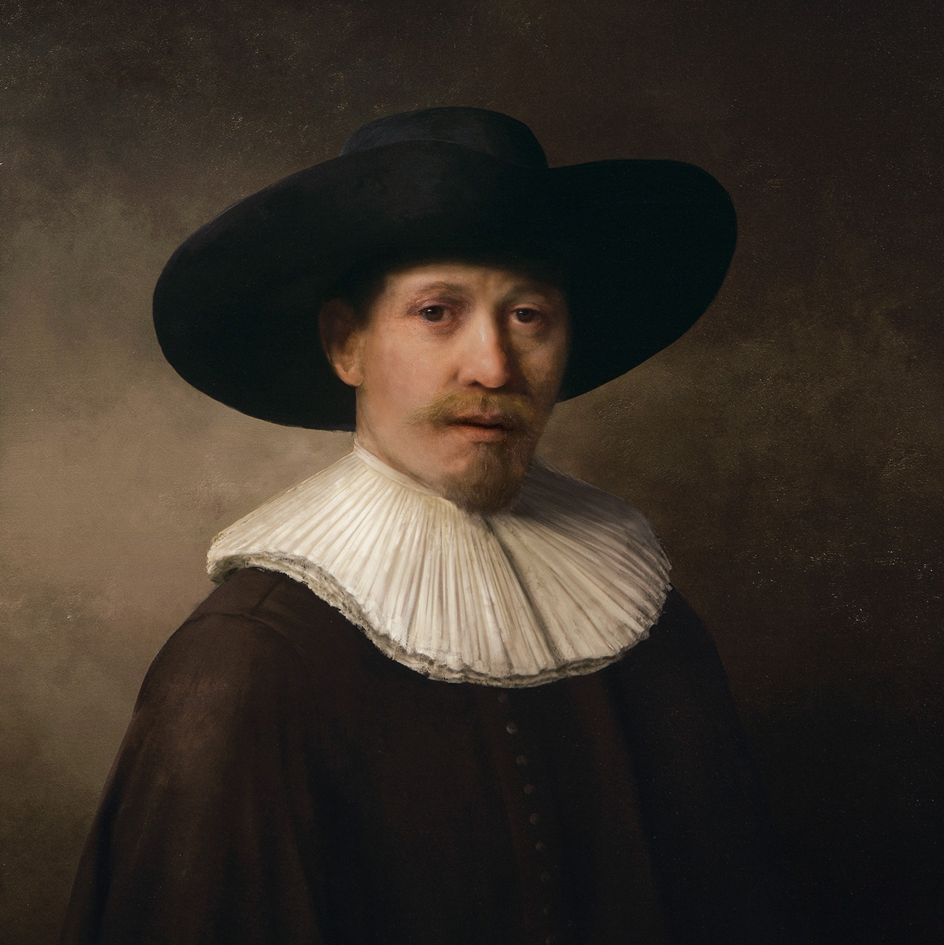The Challenge: Can We Bring a Master Artist Back to Life?
Rembrandt Van Rijn (1606-1669) was one of the greatest visual artists ever, and certainly the most important Dutch artist. His empathy for the human condition set him apart – his work focused predominantly on portraiture and the spiritual, and compared to previous artists, he was unmatched in his ability to capture his subjects’ emotions through subtle facial cues.
Dutch bank ING had a simple but powerful question – can the great master be brought back to life, to create a new painting? Enlisting partners such as Microsoft and TU Delft, ING funded a team of machine learning scientists, software engineers, and art historians to attempt the impossible.
A Masterpiece is Born: The Next Rembrandt Conceived and Executed
The team began with a huge set of raw data – 150GB of 346 Rembrandt paintings. Their first pass was with a deep-learning algorithm to upscale some of the images, maximizing resolution and quality. Next, they used a separate algorithm to determine Rembrandt’s most common subjects, partitioned by factors such as age, gender, and even head-facing direction. Using that analysis, the researchers determined that the final painting should be a portrait of a Caucasian male with facial hair, 30-40 years old, wearing black clothes with a white collar and a hat, facing to the right.
To construct the painting itself, the team first used its training set of paintings to construct new facial features – a representative pair of eyes, a nose, a mouth, etc. Using a facial recognition algorithm, the team then determined the usual proportionality of these features in Rembrandt’s other subjects, allowing the individual constructed elements to be placed in relation to one another on the face. In this step, the researchers also rendered light and shadow, since this “spotlight effect” was a principle element of Rembrandt’s work. In addition to the feature engineering that dominated the efforts described above, the researchers moved beyond the 2D plane. In order to capture Rembrandt’s textures and brushstrokes, the team analyzed a handful of Rembrandt paintings with a 3D scanner, to construct a highly detailed height map of the paintings. Using a 3D-printer, the researchers were able to print the final painting with 13 layers of ink, one on top of the other, utilizing the height map to determine texture and the previous 2D models to determine form.
Looking to the Future: Modifications and Commercial Applications
While popular press generally received the painting positively (it won a few advertising awards), focusing on the technological aspects of its creation, reactions overall (especially from experts) were mixed. Some claimed that the features and colors are all wrong, while other critics saw it as an opportunity to learn new things about an artist who has been otherwise so closely studied by traditional methods. Still others were disconcerted about what the advancement might mean for humanity’s place in creating art. We see the project as a great opportunity for people to engage more deeply with machines to create masterpieces.
Although the technological piece used only existing algorithms and approaches, the project had clear value in combining them in a unique way to do something that had never even been tried before – produce a brand new painting representative of an existing artist using only (or primarily) machines. As such, we are confident of the approach’s commercial value, especially to museums that are interested in the intersection of technology and art. One can easily imagine a successful tour of a handful of such paintings, with additional works representative of other masters – Picasso, Monet, O’Keefe, etc. Or museums and art historians might use the technology to better explore and understand artists, getting a sense for those characteristics and details that span across a collection. These sorts of paintings could also be sold to less wealthy collectors – having a “Rembrandt” in your home might be a fascinating way to show an appreciation of the arts at a fraction of the cost.
Nonetheless, we believe the approach can be pushed in a number of directions. In a coarse sense, we would want to see additional features, and more creativity over translation. Our principle concerns though stem from the enormous manpower still involved – 18 months for the creation of this painting. The more automation, and the less handcrafted aspects of the process, the more feasible the technology on a commercial scale and application to multiple artists. Finally, it remains unclear the degree to which such a process could produce multiple unique works from the same artist inputs, an undoubtedly central question. Many of these changes try to address one the main critiques of this project – that it was more a human-chosen average painting upgraded by machines instead of a true computer-generated Rembrandt.
Sources:
- https://www.nextrembrandt.com/
- https://news.microsoft.com/europe/features/next-rembrandt/
- http://www.adweek.com/brand-marketing/inside-next-rembrandt-how-jwt-got-computer-paint-old-master-172257/
- https://www.jwt.com/en/amsterdam/work/thenextrembrandt/
- https://www.engadget.com/2016/04/06/the-next-rembrandt-3d-printed-painting/
- http://www.adweek.com/brand-marketing/jwts-next-rembrandt-wins-two-grand-prix-cannes-cyber-and-creative-data-172171/
- http://www.thedrum.com/news/2016/06/24/verdict-why-next-rembrandt-sets-new-standards-creative-data

8|